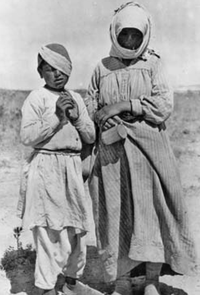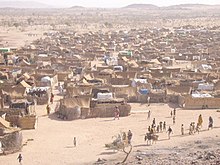Refugee


In 1951, the United Nations (UN) law called Convention Relating to the Status of Refugees, said a refugee was a person who is forced to leave their country due to natural disasters or war and conflict
owing to a well-founded fear of being persecuted for reasons of race, religion, nationality, membership of a particular social group, or political opinion, is outside the country of their nationality, and is unable to or, owing to such fear, is unwilling to avail him/herself of the protection of that country.[1]
In 1967 the Conventions’ 1967 protocol and by regional conventions in Africa and Latin America to include persons who had fled war and violence in their country. A person who is seeking to be recognized as a refugee is an asylum seeker. In the United States a recognized asylum seeker is known as an asylee.[2]
A refugee is a person who has to leave his or her country. This can be because of different reasons:
- It is no longer safe to stay, there might be a natural disaster such as flood or famine, war, or civil unrest
- There might be persecutions going on.
- The person is unable to sustain himself or herself economically.
- The person might have been expelled
- The person might have to leave for religious reasons
References
[change | change source]- ↑ "UNHCR - Refugees". unhcr.org. 2012. Retrieved 5 June 2012.
- ↑ "USCIS - Asylee". uscis.gov. 2012. Archived from the original on 17 September 2012. Retrieved 5 June 2012.
Other page
[change | change source]
